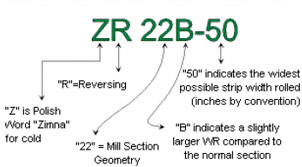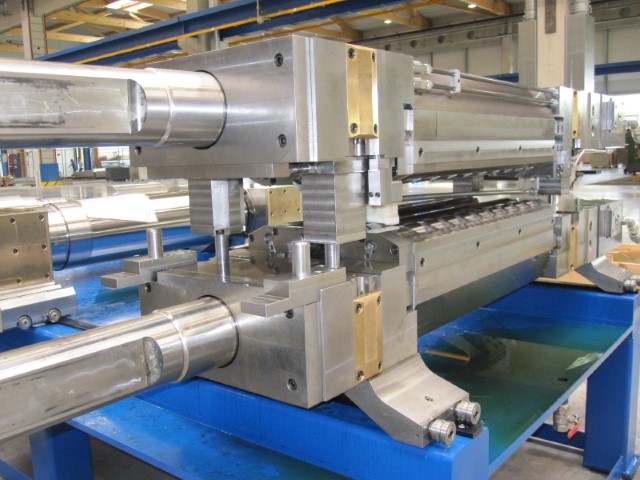Sendzimir Whitepapers
The following pages are articles that various people at Sendzimir have written over the years. Please browse at will to discover stimulating ideas and fodder for future thought. You may find here that science fiction has become science fact!

New Sendzimir Technology Assures Optimum Strip Quality at Armco
Armco Inc.’s Coshocton Operations as once again invested in Sendzimir equipment. The company has just modernized its first Z-High®, installed in 1981, to meet the design specifications of its second Z-High®, installed in 1997. “The new design incorporates computerized pass-line and side-support beam adjustment,” says Kerry Fender, General Supervisor, Cold Rolling, Armco Coshocton Operations. “This enables operations to make accurate adjustments assuring optimum strip quality for our customers.”…Process-Line Z-High® Mill for Strip-Cast Steel
T. Sendzimir Inc.—originator of the cluster mill design—is modifying its existing Z-High® Mill to make it compatible with operating conditions within the continuous casting environment. Company officials believe the potential for this new design is “exciting.”
Quality Development in the Production of Strip Products
Middletown, Ohio, USA, had been asked to find a way to roll 3.5% silicon grain-oriented steel down to 0.05 mm for the production of small transformers that would make airborne radar possible. ARMCO’s engineers tried a number of different approaches, all to no avail. Even the use of a narrow four-high mill with very small diameter sapphire rolls failed because the high lateral force caused the rolls to snap in the middle.
Shape Control in Cluster Mills
Cluster mills first came into existence in the 1930s. They are characterized by small-diameter work rolls that are supported by a cluster of rolls as shown in Figure 1 (which shows the location of eight backing assembly shafts: “A” through “H” containing eccentric saddles and bearings). More than 600 cluster mills are now operating around the world. Of these, approximately 400 are of the Sendzimir type, in which, with few exceptions, the housing is monoblock with very short columns and rigid construction, resulting in a high mill modulus (stiffness).
Tension Leveling and Skin Passing in a Galvanizing Line
Demand for galvanized sheet has grown strongly in accordance with increasingly severe requirements of ultimate users for particular characteristics and quality. This demand, coming at a time when the majority of the steel industry’s products are finding fewer outlets, has been able to develop due to the introduction of higher-quality galvanized sheet, with varied coatings, providing precise mechanical characteristics and surface conditions. These products have outlets in the building, domestic appliances, metallic furniture, and automobile industries…
What Role for the Z-High® in Aluminum Mills?
In 2001, Jupiter Aluminum placed a contract with Sendzimir for a Z-High® mill. More commonly associated with steels, what is the Z-High® and what can it do for aluminum rollers? In 1943, the United States was fully engaged in World War II. Armament production was essential, and the steel company Armco, in Middletown, Ohio, had been asked to find a way to roll 3.5% oriented-grain silicon steel down to 0.002 inch for the production of small transformers that would make airborne radar possible. Armco’s engineers tried a number of different approaches, but nothing worked. Even the narrow 4-high mill with very small diameter sapphire rolls failed because the high lateral force caused the rolls to snap in the middle.
Z-High® Mill for Aluminum
Sendzimir mills have traditionally been associated with the superior cold rolling of hard-to-roll materials such as stainless steel. What is not so readily apparent is that this concept is being profitably applied to hard aluminum alloys, such as those containing 3-5% magnesium. Moreover, a version of the Sendzimir Z-high mill has recently been optimized for aluminum rolling by incorporating slightly larger work rolls in order to allow for greater draft reductions inherent in the breaking down of aluminum.
Positional Sprayboards
Being able to change work rolls quickly and without damaging the strip or the equipment is important. Sendzimir therefore developed a modification to the sprayboards that uses hydraulic cylinders to raise or lower individual sprays, thus pushing the strip out of the way of the work roll to be changed. This modification facilitates work roll change when the strip is in the mill by making the rolls more accessible.

20-High Mill Nomenclature
Sendzimir 20-high cluster mills commonly carry the prefix ZR, which stands for “Zimna,” the Polish word for “cold,” and “reversing.” This prefix was used the first time to describe Silesia’s first reduction mill. The numbers, and sometimes letters, following this prefix describe the mill’s geometry, the relative size of its work roll, and the widest strip that the mill can roll.
The number immediately following the “ZR” indicates the mill “section” size comprising a combination of the backing bearings, the work rolls, and so on. For example, a ZR 23 has backing bearings with a diameter of 8.858 inches (225 mm) and work rolls with a diameter of 1.578 inches (40 mm). A ZR 32, on the other hand, has backing bearings of 1.875 inches (48mm) in diameter and work rolls of 0.250 inches (6.5mm) in diameter. The significance of the difference is that a ZR 23 can roll ferrous and nonferrous materials down to a minimum gauge of 0.002 inches (50 microns), while a ZR 32 can roll ultrathin nonferrous foil down to 0.0001 inches (2.5 microns), which is 20 times thinner!

Advances in Cold Rolling Technology
At the beginning of 1985, the steel and non-ferrous industries found themselves in a bind — they were faced with low consumption, shrinking markets, higher costs, increased quality demands, and lower prices. This was not an enviable position, particularly as it followed three decades of relatively good prosperity.
The customer of the mid-1980s has had to accept smaller cars; higher interest rates, and greater costs for owning his home. He has experienced inflation a bigger food budget, higher taxes, and a spouse who has a second job and shares in decisions of how to make ends meet. What does that mean? It means that the customer is more choosy and more difficult to satisfy.